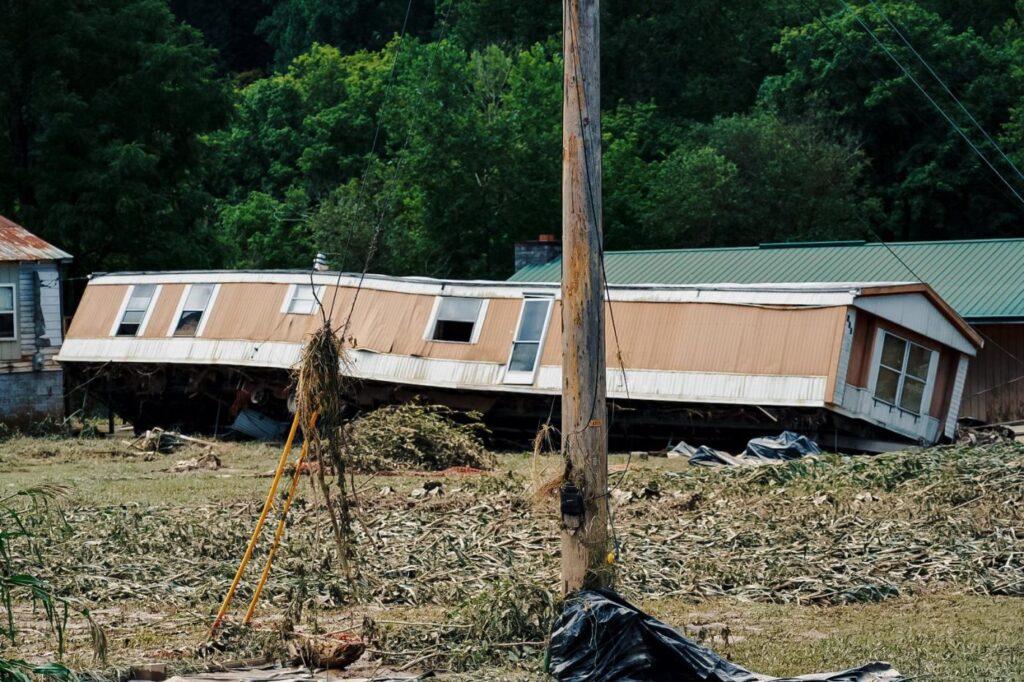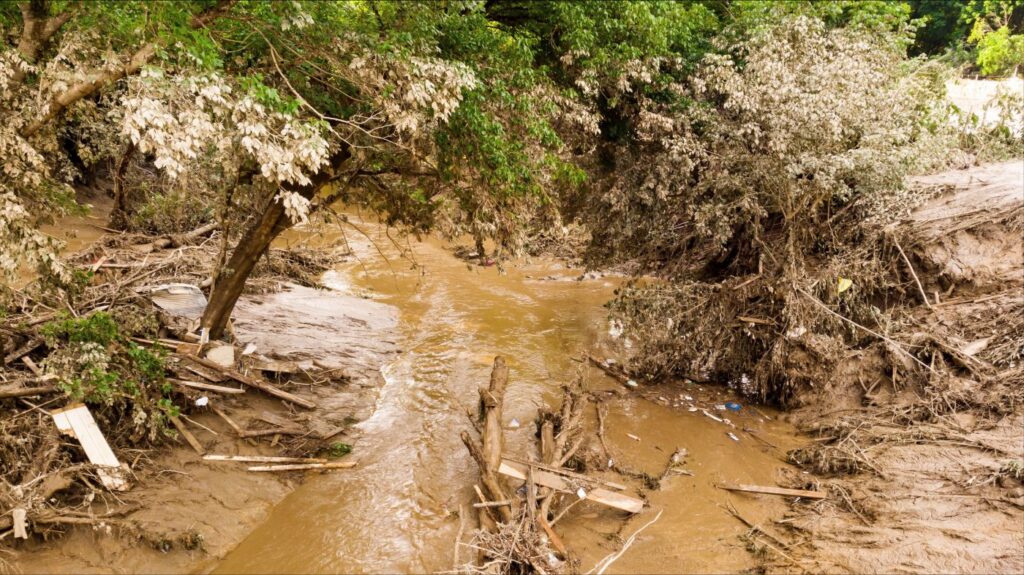As many first responders are aware, the first 24 hours in search and rescue operations can mean the difference between a search, a rescue, or a recovery of a missing person. If someone had told me that I would one day be utilizing the skills I learned as a former law enforcement officer in the hollers of Eastern Kentucky, a younger version of me would have thought you were a bit “out of touch.”

On July 28, record rainfall caused massive flooding and sudden landslides across Appalachia. Within a day, Team Rubicon had begun spinning up responses to the flooding in Kentucky. I quickly discovered I would be on Recon and the first Greyshirt to arrive in some of the worst-hit areas. The other Recon team members would arrive about 12 hours after me, though it would be a full 24 hours after I drove into the area before we would connect.
As a photographer, public information officer, and experienced recon Greyshirt, my role on the team would be to capture the disaster’s story and to find a way to tell the world about what had happened in Kentucky. Doing so could help other Team Rubicon responders better understand what was happening on the ground as well as potentially garner more support among other organizations and the general public, most of whom could not begin to visualize the breathtaking damage that was taking place in these small communities.
After surveying some of the worst hit areas—around Jackson, where a dam was overflowing, in the city of Hazard, and in Knott County, where damage was not as severe but was devastatingly widespread—I made my way to the towns of Quicksand and Lost Creek which were so flooded they would remain unrecognizable until the water receded.
I was standing on a street in Lost Creek in front of a home that had been entirely swept up by the floodwaters and then deposited in the driveway when the homeowner arrived for the first time after the flood. Her eyes filled with tears as she looked onto the place she had called home. Then, uttering a powerfully somber whisper about the damage, she said, “This isn’t even the worst.”

The worst, she explained, was hidden away in a remote holler where an entire community had been wiped away by several landslides that had mixed with their flooded Caney Creek, which feeds the Kentucky River.
The journey to the remote community was not for the faint of heart. I made my way around sinkholes that had swallowed entire roadways and past communities that were desperately using personal equipment to reopen routes to allow residents and Search and Rescue teams access. Finally, after discovering winding roads that had almost been wholly disguised by damage and debris, I found the holler.
Throughout my time with Team Rubicon, I have had the opportunity to respond to hurricanes, typhoons, tornadoes, and landslides, yet the immense destruction I witnessed in the small community became the worst I have ever seen.
As I began to survey the area, I met a young man looking through debris piles next to a still-rushing river. To offer help, I asked him what he was looking for.
“Abby*,” he answered.

Abby, it turned out, was the young man’s cousin, and soon I was walking long stretches of the river, looking for signs of Abby with him. Officially, Team Rubicon does not do search and rescue or search and recovery. Yet, how could I not help?
As we searched, he told me the story of Abby: How she’d been home when the floodwaters crashed through their holler. A story of how she’d pushed her teenage son off their porch and into chest-deep rushing waters, which nearly stripped him of his clothing but saved his life. A story where, moments later, a neighbor heard a loud crash and saw a headlamp floating down the river under a collapsed home.
No one had seen Abby since, he said. She was one of the only people in the little creekside community who still had not been found.
I had spent four years as a law enforcement officer, but even with all of the knowledge and skills I’d gained, I could not identify any indicators of where Abby might be. Still, we searched. When we crossed paths with Kentucky State troopers and the SAR team, they informed us that they could not go farther into the fields due to the pastures becoming deep, sucking mud pits. Every time they tried, the mud fields would nearly swallow them whole. Upon mentioning that I had my drone, the troopers quickly asked if the drone could check farther up the areas they could not access. Of course, I said yes.
Soon, we were in a train of ATVs attempting to get as far as possible into the once-fields, skirting the mud traps. We circled destroyed structures and climbed impassable obstacles. When we reached the final home, I launched my drone and began flying passes over the area. Looking down at a small screen, I could not fully visualize the debris piles below, but I could save those images and enhance them later. From an aerial position, what I could see were mud lines where the once 3-foot creek had raised into the treetops.

Leaving that afternoon, we crossed paths with Abby’s husband. He was very emotional about the search thus far and hoped something would come from the images on my drone. That evening, as I downloaded the photos and began enhancing them, I realized I, too, was vigorously searching for Abby. As I identified possible debris piles buried under the mud, I sent potential search piles back to the young man.
About 24 hours later, I received a message from Abby’s husband.
“They found her.”
As their family was having an emotional moment, I found that I was, too. My response is challenging to describe other than a mix of empathy and relief for the tight-knit community. I realized that only now that Abby had been found and that her family could give her a proper goodbye could the community now begin its long slog toward recovering from the disaster. With one of their own missing, everything else had been on hold.
During my former years in law enforcement, I had seen some of humanity’s very best and worst. But, as many first responders know, you rarely ever “stop” being a first responder. You always remember those skills, those experiences, and we often find ourselves stepping back into roles serving people on their worst days. For me, this situation called me to step back into my old law enforcement boots, figuratively. It began with an investigation, a search for a community that needed the most immediate help, and ended with the recovery of someone’s loved one.
One of the pillars of Team Rubicon is service. The shirt that we wear, the grey shirt, embodies a statement of service to others. It represents a choice to serve others when they need it most. Every person who earns their shirt brings a unique skill set to our disaster response and humanitarian work.
Yet, even in the face of this truth, I used to wonder if I would ever serve again in a manner that truly made a difference for someone. This story is a reminder that I no longer have to wonder. Team Rubicon gives everyone the option of being part of something much bigger than themselves. Even more so, it’s an opportunity open to every individual, not just first responders and veterans.
Believe me, because that opportunity came for me in this story, not with a law enforcement badge or a special government position; instead, it came while wearing a grey shirt and simply asking a young man if he needed help.
*The name of this flooding victim has been changed to protect the family’s privacy.




